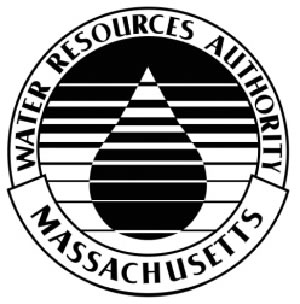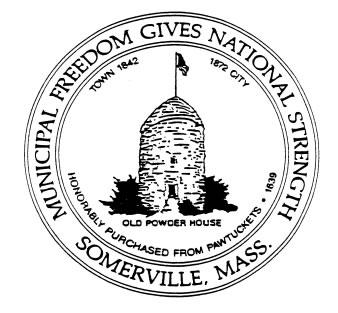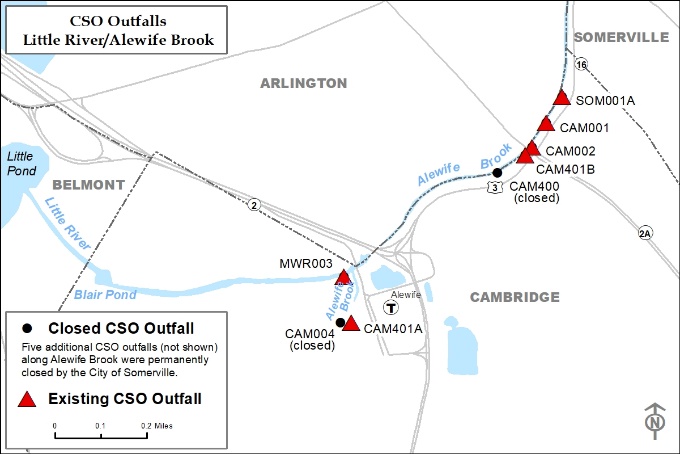In August 2019, the Massachusetts Department of Environmental Protection (DEP) issued, and the U.S. Environmental Protection Agency (EPA) subsequently approved, a Final Determination to Adopt a Variance for Combined Sewer Overflow Discharges to the Alewife Brook/Upper Mystic River Basin. The Variance is a short-term modification of the Massachusetts Water Quality Standards, which allows for limited combined sewer overflow (CSO) discharges from the outfalls along the Alewife Brook/Upper Mystic River Basin permitted to the Massachusetts Water Resources Authority (MWRA) and the Cities of Cambridge and Somerville, subject to specific conditions. One of the conditions in the Variance requires the MWRA and the Cities of Cambridge and Somerville to annually issue a press release, which includes: (1) general information on CSOs; (2) the location of outfalls in the Alewife Brook/Upper Mystic River watershed; and (3) potential health risks posed by exposure to CSO events. The MWRA and the Cities of Cambridge and Somerville also provide herein an update on the progress of CSO control measures to improve the water quality of the Alewife Brook/Upper Mystic River Basin.
I. General Information
The water quality in the Alewife Brook/Upper Mystic River Basin is often impaired due to bacterial and other pollutants from a number of sources, including CSOs, cross connections between sanitary sewers and storm drains, and stormwater runoff. Water quality in the Alewife Brook during both wet and dry weather generally fails to meet state bacteria standards for fishing and swimming. State bacterial standards for the Upper Mystic River Basin are typically only not met during and after large storm events.
Contaminant sources that contribute to water quality impairment include CSO, stormwater and other discharges from communities along the Alewife Brook, including Belmont, Arlington, Cambridge, and Somerville. All of these communities are undertaking programs to identify and control sources of pollution to the Alewife Brook. Although similar contaminant sources contribute to water quality impairment of the Upper Mystic River, as well contributions from Alewife Brook, only one treated CSO discharge remains from MWRA’s Somerville Marginal CSO facility (MWR205A/SOM007A). This outfall is located approximately a half mile upstream of the Amelia Earhart Dam, just below the Rout 28 Bridge over the Mystic River. Portions of Cambridge and Somerville are served by combined stormwater and sanitary sewer systems, which is common in older cities. Six remaining CSO outfalls permitted to the MWRA and the Cities of Cambridge and Somerville along the Alewife Brook (see the map in Section II. below) are designed to release CSO (a mixture of wastewater and stormwater) during heavy rainfall to provide critical relief to the sewer system when flows exceed system capacity. While these discharges can contribute to the impairment of water quality, they are necessary to prevent sewer backups into homes, businesses, and streets.
II. Location of Outfalls
III. Potential Human Health Risks
CSOs and contaminants that can get into separate stormwater pipes can include microbial pathogens (i.e. bacteria, viruses, and parasites) and toxins (i.e. metals and synthetic organic chemicals). Some of the health risks associated with contact and ingestion of these discharges include: gastrointestinal illnesses, acute diarrhea, and skin irritation. Because of increased health risks associated with these contaminated discharges, public health officials recommend avoiding contact with the Alewife Brook/Upper Mystic River Basin during rain events and for a period of 48 hours following rainfall. Contact with floodwaters should also be avoided, as they may contain similar contaminants and pose associated health risks. Proper precautions are necessary to minimize these risks during flooding events. DEP has developed guidance for homeowners for responding to flooding onto your property from large storms or sewer backups, which can be found on the DEP website.
MWRA and the Cities of Cambridge and Somerville have implemented a system for rapid reporting of CSO discharges to the Alewife Brook/Upper Mystic River Basin. These subscriber-based systems provide timely information regarding a CSO activation including the start time and location of the discharge. To subscribe, sign up at these links:
- Cambridge CSO Subscriber: https://www.cambridgema.gov/Subscribe
- Somerville CSO Subscriber: https://www.somervillema.gov/departments/alewife-brook-combined-sewer-overflow-cso-control
- MWRA CSO Subscriber: https://www.mwra.com/updates/everbridge/join.html
IV. MWRA and the Cities of Cambridge and Somerville Actions to Address Alewife Brook CSOs
As part of the 36-year old Federal District Court Order in the Boston Harbor Case (D. Mass. C.A. No. 85-0489-RGS), MWRA is required to undertake certain corrective actions to reduce or eliminate CSO discharges to Boston Harbor, the Mystic, Charles and Neponset Rivers and Alewife Brook. MWRA and its communities with permitted CSO outfalls, including Boston, Cambridge, Chelsea and Somerville, have been reducing CSO discharges since the 1980s. Major improvements to the regional wastewater collection and treatment system by MWRA, together with local system improvements by the communities, including the separation of combined sewers with construction of new storm drain systems, have contributed to the closing of many CSO outfalls and a 87% reduction in the total annual volume of CSO discharge region-wide during an average/typical year.
To date, 35 projects in the Long-Term CSO Control Plan (LTCP) approved by the U.S. Environmental Protection Agency (EPA) and DEP, and mandated in the federal court order, have been completed. Seven of the 35 projects have contributed to the control of CSO discharges to the Alewife Brook. In December 2021 MWRA submitted the Final Post Construction Monitoring and Performance Assessment report, which summarize the results of CSO inspections, overflow metering, hydraulic modeling, system performance assessments and water quality assessments. Together, these seven projects have closed seven CSO outfalls (more than half of the outfalls that were active in the late 1980s) and contributed to reducing average annual CSO volume to the Alewife Brook in the Typical Year, to a volume less than the total required under the CSO LTCP. However, one outfall (SOM001A) remains that did not meet the activation and volume goals established. Notwithstanding this shortfall, recent water quality modeling documented in MWRA’s report has shown that at current levels of control, if only CSOs were discharging to the Alewife Brook, the water quality standards are met 99.6% of the time in an average/typical year. However, the water quality is greatly reduced when including all other pollutant sources contributing to Alewife Brook (predominantly stormwater contributions), resulting in the water quality standard being met only 45% of the time in an average/typical year. The work to meet the goals at SOM001A continue under a 3-year extension to the Federal District Court order, which will focus on further CSO improvements at SOM001A and 15 other CSOs not meeting LTCP goals system wide. Annual reports will be provided on MWRA’s progress and a supplement to the December 2021 Final Performance Assessment report will be submitted by December 2024 on the 16 CSOs not currently meeting LTCP goals.
Pursuant to the terms of the Variance, MWRAcompleted and reported in April 2021 on an optimization evaluation of the newly rehabilitated Alewife Brook Pump Station to ensure its pumping strategies are appropriately configured. More recently, in December 2022, MWRA completed and submitted the Alewife Brook and Charles River System Optimization Evaluations report. Optimization alternatives, including possible modifications to the structures in the combined sewer system, which can divert excessive flows during larger storm events to CSO outfalls (i.e., CSO regulator), were evaluated using the MWRA’s recently updated and calibrated hydraulic model. The intent was to ensure available conveyance capacity is being fully used, while not causing conditions that could contribute to flooding or backups in the connected sewer systems. No optimization measures were recommended at the regulators connected to the six active CSO outfalls along the Alewife Brook. At these locations, increasing the weir height or regulator connection capacity resulted in unacceptable water surface conditions in the connecting sewers, shifted the CSO volumes or activations to other Alewife Brook CSO outfalls, or resulted in small improvements with significant construction concerns, as well as community impacts and costs. However, the work continues to further reduce or eliminate CSO discharges to the Alewife Brook. In addition, MWRA, Cambridge and Somerville are each proceeding with developing separate CSO Control Plans for CSO outfalls owned by each entity that discharges to Variance waterbodies of the Alewife Brook/Upper Mystic and Charles River Basin. These CSO Control Plans will further analyze the costs, performance, and the impacts to water quality associated with additional CSO control alternatives, up to and including elimination of CSOs. Additional consideration will be given to the use of Green Infrastructure technologies and the impacts on Environmental Justice communities. MWRA, Cambridge and Somerville will continue to partner in this effort.
For more information on CSOs and the CSO control program, visit the MWRA, Cambridge, and Somerville websites at:
https://www.mwra.com/03sewer/html/sewcso.htm
https://www.cambridgema.gov/cso
https://www.somervillema.gov/cso




